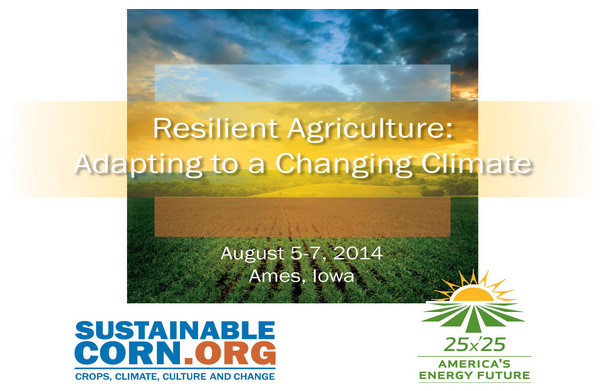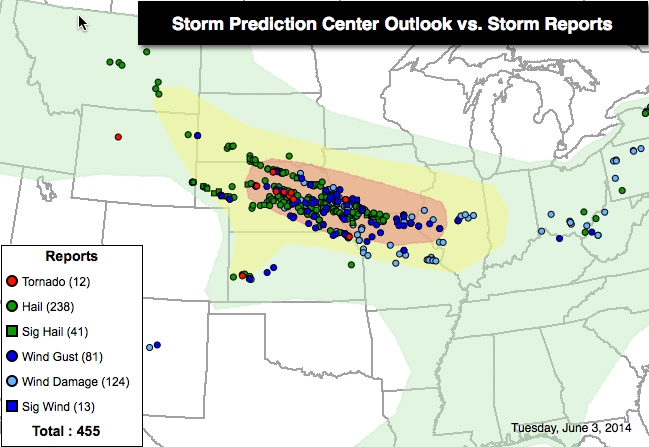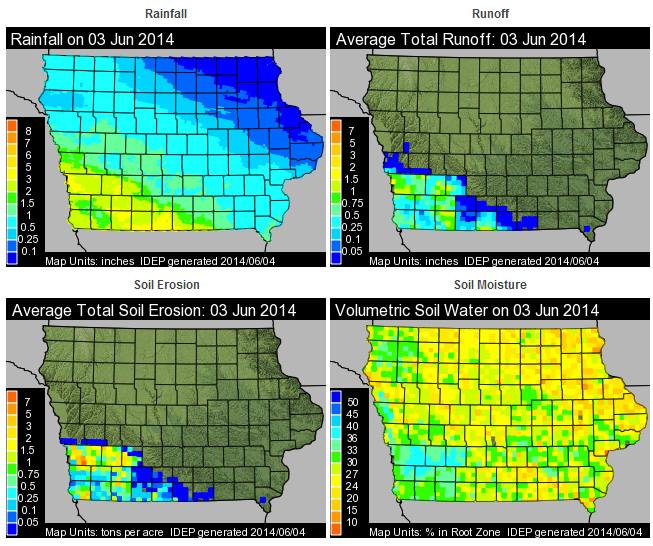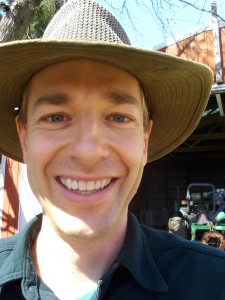On June 3 a strong storm system moved across Nebraska, South Dakota, Iowa, Kansas, Missouri, and Illinois with large hail and heavy rain. The storm was significant enough to make the national news with the National Weather Service reporting large hail, winds up to 85 mph and rainfall in excess of 4 inches.
The Iowa Daily Erosion Project showed localized soil erosion nearing 7 tons per acre from this one storm event in southwest Iowa.
The soil loss was so significant that Jon Bakehouse, a southwest Iowa farmer, was moved to write the following on the Practical Farmers of Iowa cover crop listserve.
“We experienced an incredible display of hail, rain and wind here in southwest Iowa last Tuesday. While our farm missed the worst of it, fields just a few miles to our north were obliterated. From the road, many fields simply look brown. Some of the rows where the cash crops were are still visible, but it looks like the hail first shredded the crop, then the rain covered everything with a layer of top soil. Decades-old terraces covered by thick stands of brome overflowed, blew out, and silted in. It is nearly impossible to distinguish no-till fields from tilled fields. This damage extends for miles toward Council Bluffs, and I can’t even begin to fathom how much topsoil moved downstream.
My mind of course wandered toward the protection cover crops could have offered. Would a really thick mulch mat have made any difference? If so, what would it take to get a mat that thick, and is that even possible in a traditional corn/soy alternation?
My mind then wandered a bit more and began to wonder why we are still unprepared for weather events like these. Is it our inability to take a lesson from history dovetailed with our inability to think beyond this weather event, next season, and most importantly, the next decade? What will our landscape look like 10, 50, 100 or 1000 years from now after innumerable (and arguably worse) weather events like this one? What did our landscape look like 10, 50 or 100 years ago?
The most important question I keep coming back to, though, is how can we begin to think about our farming practices outside of the boundaries of our lifetime and the confines of our own memories? How do we get landlords, tenants, landowners, agronomists, coops, the government, heck, the whole industry, to think and act in terms of decades instead of a single season? “
The questions that Jon ask are really the basis of the Sustainable Corn Project. What practices can farmers implement that will provide the Midwest corn cropping system with the resiliency to withstand extreme weather events such as a strong summer storm system or a drought like the Midwest experienced in 2012 and be agronomically and environmentally viable long into the future?
The Sustainable Corn team of 150 scientists, educators and graduate students investigating this issue will be meeting, along with farmers and invited ag industry partners in Ames, Iowa, August 5-7 for the Resilient Agriculture Conference to discuss climate variability, impacts on agriculture and our water and soil resources, and what can be done to make the agricultural landscape both environmentally healthy and productive. The conference will focus on existing and new practices that can help farmers create management systems that sustain a competitive agriculture and enhance the ecological integrity of the landscape at the same time. 
To learn more about the Resilient Agriculture Conference and to register to attend click here.





